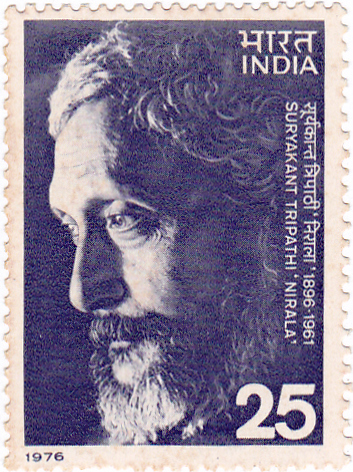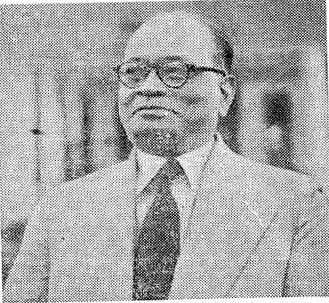Some of our regular readers asked us if we would be publishing our yearly list of authors whose works have come out of the public domain. We usually publish it early in January but this time, it got delayed a bit.
Every year on January 1, the copyright of a number of creative works expires and they enter the public domain in India and in other countries of the world. The criteria for creating this list for 2022 is that the author died in the calendar year 1961 and the work was published before his death. In case the work was published after the author’s death, it will only come out of copyright after 60 years from the date of publication.
These are the Public Domain Lists we have created in the previous years: 2012,2013, 2014, 2015, 2016, 2017, 2018, 2019, 2020,2021
A book in the public domain is now free to be republished, translated, and converted to different formats.
Our primary source is Wikipedia but we do consult other secondary sources if we come across them. Let us know if you think we have made any errors and also feel free to comment on any author we may have missed out.
Saralabala sarkar (1866- 1961)
Saralabala Sarkar was a politically active Bengali novelist, short story writer, essayist and poet who served as a Member of the Women Satyagraha Samity of the Satyagraha movement in British India. Her books of poetry include Prabaha in 1904 and Arghya in 1938. Her memoir, Harano Atit, was published in 1953. Her works were published in journals like the Antahpur, Bharatbarsa, Jahnabi, Prabasi, Suprabhat, Sahitya Pradip, Utsaha, etc.
Sachindranath Sengupta (1873 – 1961)
Sachin Sengupta was a prominent Bengali playwright and the producer and director of theatrical plays in Calcutta, India. He traveled all over the world as part of the non-governmental troupe. His famous plays include Raktakamal, Rashtrabirohi, Desher dabi, Sirajdullah. Like many writers of his era, he was involved in the nationalist movement and his plays are replete with nationalistic fervor. You can listen to the radio play – Yug Yugantar by Sachindranath Sengupta here.
Chandradhar Barua (1874 – 1961)
Chandradhar Barua was an eminent writer, poet, dramatist and lyricist from Assam. He was inspired by the literary works of Michael Madhusudan and is remembered for his kavyas like Meghnad badh, Ranjan, Bidyut Bikash, Kamrup Jiyari and Muktaboli. What stands out in his writing is his satirical stance. He was the second president of the Assam Sahitya Sabha in 1918 and was the founder secretary of Asam Sahitya Sabha Patrika. He also represented India at the Round Table Conference held in London in 1930.
Bhupendranath Datta (1880 – 1961)
Bhupendranath Datta’s reputation is often overshadowed by his brother Swami Vivekananda. He was an erudite scholar, revolutionary, sociologist, anthropologist and writer. Datta studied in Ishwar Chandra Vidyasagar’s Metropolitan Institution and later joined the Brahmo Samaj. He joined the Bengal Revolutionary Society and served as the editor of Jugantar Patrika during which time he built a strong rapport with Sri Aurobindo. He was imprisoned for a year and then left for the US where he indulged in political activities, later relocating to Berlin. He returned to India and immersed himself in political activities. A famous book by him is Swami Vivekananda : Patriot-Prophet. Other Bengali political books by him include Aprakasita Rajnitik Itihas (1953) Bharater Dvitiya Svadhinatar Sagram (1949), Jati Samgathan (1928-29),Yuga Samasya
(1926-27), etc.
Nalam Krishna Rao (1881 – 1961)
Nalam Krishna Rao was an accomplished Telugu writer, magazine editor and social activist. He founded Gowthami Grandhalayam at Rajahmundry in 1898. His famous works include Sri Krishnaraya Andhra Vignana Sarwasvamu and Jateeya Lokoktulu. The Nalam Krishna Rao Memorial Award is given to the Best Woman Writer in Telugu.
Charu Chandra Bhattacharya (1883 – 1961)
Charu Chandra Bhattacharya was a science teacher and Bengali science writer. He was a brilliant student and ended up doing his Masters in Physics at the University of Calcutta. One of his mentors was none other than Jagdish Chandra Bosu. When he wrote, he preferred the simple dialect Chalit Bhasha. In 1939, he joined the publication department of Visva Bharati, Shantiniketan. He published the Rabindra Rochonaboli (Collected works by Rabindranath) and aided Rabindranath Tagore in publishing a series of books to promote literacy. He then started writing more books of the Bishwa Vidya Songroho series and his books featured mostly science. He edited several Bengali magazines and even wrote textbooks. Here is a book by him: Bidyapati O Chandidas: Buy Bidyapati O Chandidas.
Shaukat Ali Khan Fani Badayuni (1883 – 1961)
Shaukat Ali Khan or Fani Badayuni was an Indian Urdu poet. He graduated from Bareilly College in 1901, studied law at Aligarh Muslim University, and started composing poetry in his twenties. He moved to Hyderabad when he was appointed in the department of education. His first collection of poems was published in 1917 by Naqib Press. His other published works include Baqiyat-e-Fani (1926), Irfaniyat-e-Fani (1938), etc.
Rathindranath Tagore (1888 – 1961)
Rathindranath Tagore, son of Rabindranath Tagore and Mrilanini Devi, was an educationist, agriculturist, carpenter, architect, writer, painter and teacher of genetics. He studied at Shantiniketan and then after a stint in Japan moved to the US. Later he returned to India and served as the first vice-chancellor of the Visva-Bharati University. To know more about this eclectic character, read this account of him by his foster son.
Some books by him are available here: Pitrsmriti and On the Edges of Time.
Suryakant Tripathi (1896- 1961)
 Suryakant Tripathi ‘Nirala’ was truly unique. With a background in Bangla, he ended up being a Hindi poet, novelist, artist and essayist. His life was punctuated by several tragedies- an unhappy childhood, a short-lived marriage, the death of his daughter and a subsequent bout of schizophrenia.
Suryakant Tripathi ‘Nirala’ was truly unique. With a background in Bangla, he ended up being a Hindi poet, novelist, artist and essayist. His life was punctuated by several tragedies- an unhappy childhood, a short-lived marriage, the death of his daughter and a subsequent bout of schizophrenia.
He made a mark with his verse and was the pioneer of the Chhayavaad (Neo-Romantic) movement of Hindi literature (a movement that also included Jaishankar Prasad, Sumitranandan Pant and Mahadevi Varma).His craft was not reserved to poetry- he also wrote novels like Nirupama, Prabhavati, Choti ki Pakad, and Kulli Bhat. There are several stories woven around this poet- for instance, American novelist and translator David Rubin praised Nirala’s poem Saroj Smriti, which was dedicated to his daughter Saroj, and when Gandhi complemented Nirala by calling him the Tagore of Hindi literature, he was not flattered.
 R. P. Sethu Pillai (1896 – 1961)
R. P. Sethu Pillai (1896 – 1961)
R. P. Sethu Pillai was a Tamil scholar, writer and professor at the University of Madras. He studied law and after a short political stint began teaching. He ended up becoming the Head of the Tamil department. In 1955, he won the first-ever Sahitya Akademi Award for Tamil for his series of essays titled Tamil inbam. He was awarded a D. Litt degree and he wrote over twenty-five books. His famous work is the biography of Bishop Robert Caldwell titled Caldwell Aiyar Sarithram. He was also involved in the creation of the Tamil encyclopedia and the last volume of the Tamil lexicon. He wrote prolifically in English as well.
Vattikota Alwar Swamy (1915- 1961)
Vattikota Alwar Swamy is the first Telugu novelist. He had humble beginnings but his love for books led him to fight against the Nizam. A famous book by him is Jailu Lopala about his experience while being imprisoned. His other novels include Prajala Manishi (People’s Man) (1952) and Gangu (1940–45). he established Deshoddaraka Granthamala and published 35 books. He also published a newspaper called Telangana.
 Nalin Vilochan Sharma (1916 – 1961)
Nalin Vilochan Sharma (1916 – 1961)
Professor Pandit Nalin Vilochan Sarma taught Hindi Literature in the University of Patna. He was born to a scholarly family and is credited with having started the Nakenwad movement in Hindi literature. He was heavily influenced by trends in European literature and his erudition had no parallel at the time.
Professor Nalin Vilochan Sharma believed that diction in poetry mattered more than content. He believed in simplicity and found the phrases of the literature at the time too cumbersome. He was also a well-known dramatist and critic. Some works by him include Bibbo ka Bibbok, Drishtikon, Jagjivan Ram: A Biography, Naken ke Prapadya, Swarna Manjusha.
If you have links to any other work of theirs for download or for purchase, please leave a comment.
Want to convert an out of copyright book into a book for your own private use? Use QuickPrint.




